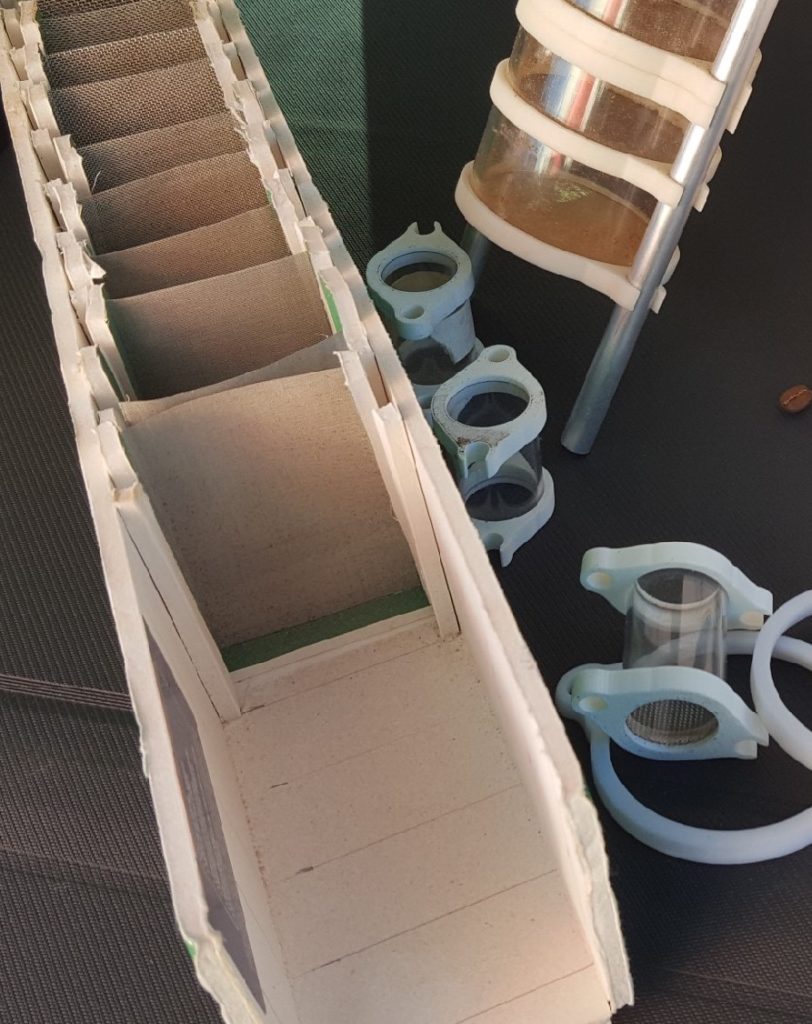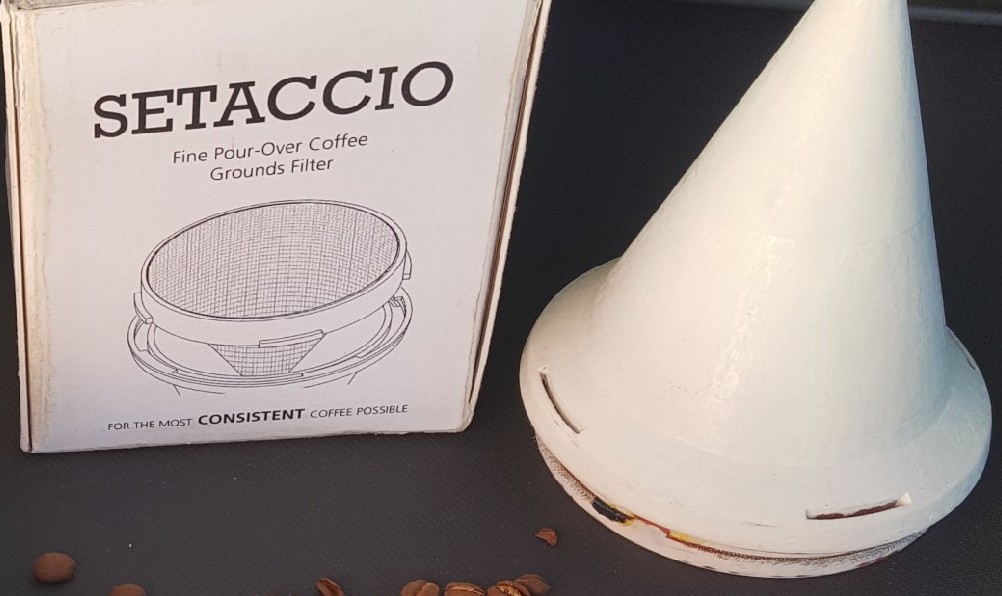
Answer a question ASAP!
Stanford’s undergraduate design program is centered around a collaborative senior project. Go out into the world, find a group of people, find their unmet needs (quarter 1), ideate, prototype, test, and repeat around a particular need (quarter 2), and build out the hypothetical business to deliver that product (quarter 3). Every other class in the curriculum is designed around supporting these goals, from instruction on design interviewing, to industrial design, to building a credible, pitch-able business plan and brand.
Setaccio is a project rooted in the new wave of craft coffee accoutrements. In our sojourn into the world of coffee, we discovered that coffee enthusiasts carefully control every aspect of brewing: water/bean ratio measured with precision digital scales, water temperature to degree, steeping time to the second. However, we also discovered that no current grinding implement can be described as precision, as even expensive commercial grinders produce more than 15% “fines” content by weight– those grounds that are markedly smaller than the targeted particle size. Small particles have a radically larger surface-to-volume ratio than larger particles, greatly accelerating their extraction rate. Over-extracted coffee begins to break down the vegetable matter of the bean itself, creating undesirable, astringent flavors. With this nugget in mind, we set out to discover the optimal grind size of coffee beans destined for the pour-over style, given the lack of standardization in commercial grinders. A quick prototype, and some grind samples from different craft coffee shops, later, and we had the information we needed.
There are a number of different grinder styles that use steel rollers, blades, or sintered ceramic cutters, but none got us to a satisfactory place. Enter Setaccio, a coffee ground sifting system for the pour-over style. With a wide surface area mesh carefully selected for appropriate particle size, and married to modern minimalist industrial design. You can see the visual difference while making your pour-over — no more “muddy” grounds, just the particle size you need. Taste tests confirm a markedly smoother, lower-astringency flavor, especially for the recent wave of lighter, fruitier-tasting bean roasting styles. The smaller particle sizes you filter out are perfect for espresso, or my personal favorite, cold-brew — for the coffee enthusiast, Setaccio fits right in to the existing ecosystem.

with the minimalist packaging
Using community connections we made early in the project, we tested and refined the design through multiple iterations. I was responsible for much of the physical prototyping including 3D printing, while my partner Wending Lu was responsible for much of the graphic design including packaging and promotional materials. During the third phase of the project, we analyzed the potential business in manufacturing and selling Setaccio, including a bill of materials, quotes from real-world vendors and distributors, and multiple pitch rounds to potential investors. We also set out to find potential competitors, doing extensive market research. We also made efforts in developing a playful brand identity, including the name (Setaccio, Italian for “sieve”) and mascot (the dolphin, a cetacean). Our finding overall was that we had no extant competitors aside from a product briefly available just in Japan during the coffee boom there in the 90s, but the potential customer base was not yet large enough to justify the financial risk in scaling production — and that small scale manufacture would make this simple product prohibitively expensive for the average person. While a somewhat disappointing finding, I’m not sure I would do anything different; I learned so much during the course of the project that helps me every day in every facet of my working life. Perhaps the most important lesson is to cultivate optimism and joy into your work, as everyone you encounter can tell the difference between someone just showing up, and someone who is enjoying themselves. An infectious joy became a part of our work and greatly helped us in enrolling people in our success.